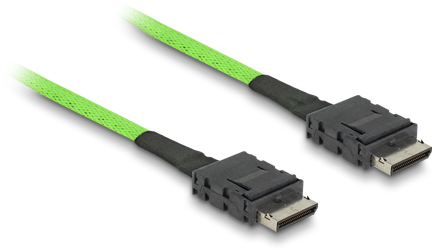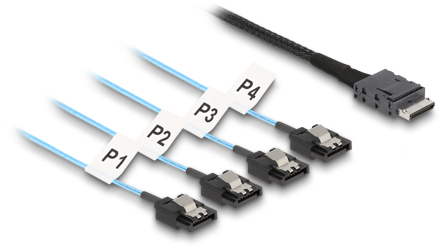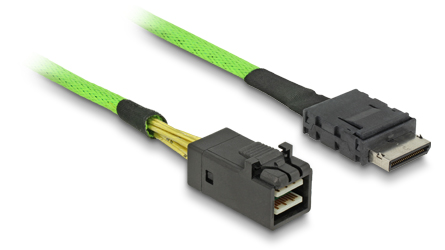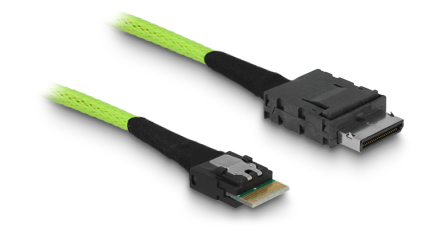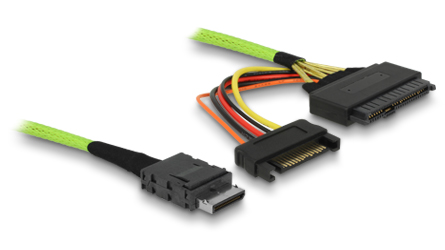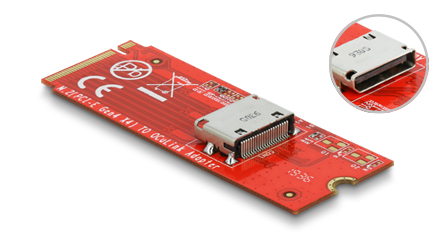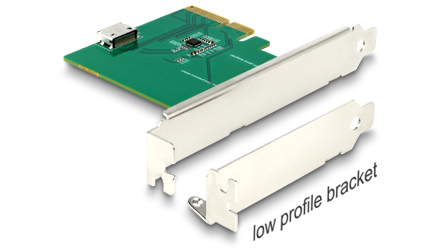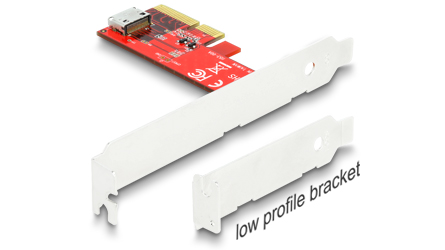The interface OCuLink
Content
What is OCuLink?
OCuLink is a connection system for the PCI Express area. The interface has a Small-Form-factor which is optimized for internal and external enclosure usage. OCuLink cables are a cost-effective possibility for an external PCIe extension.

About history
The O in the name OCuLink stands for optical, and Cu stands for Copper (Cu = chemical symbol for copper), so the designation refers to an optical and copper connection. The interface was developed by the PCI-SIG, the Body for standardization and norming of the PCI interface (Peripheral Component Interconnect Special Interest Group). In 2012, it became known the PCI-SIG would develop a cable-based standard protocol for PCIe devices outside of the motherboard. This standard should be Apple and Intel independent.
At that time, Thunderbolt was already on the market. It used Mini DisplayPort connectors and supported "only" PCIe 2.0, which allowed a total data throughput of 20 Gbps. In contrast, OCuLink should start with four lanes of PCIe 3.0, which would correspond to a 32 Gbps data throughput. So, firstly OCuLink Version 1.0 was launched in October 2015. It supported up to PCIe 3.0 x4 lanes (8 GT/s*, 3.9 GB/s) via copper cable.
In another version of OCuLink in the year 2017, already up to 16 GT/s (altogether 8 GB/s for x4 lanes) were provided. OCuLink 2 delivered PCIe 4.0 bandwidth and a new connector very similar to the standard DisplayPort connector. This version was considered an alternative or competitor to Thunderbolt.

Side information: Although the "O" at OCuLink stands for "optical", this variant with glass fibers (= optical data transfer) was and is rarely used. In that issue, the developer initially has been too euphoric.
Technical specifications and equipment
The external and internal connector supports up to four PCIe lanes with all 8 GT/s supporting cables: In this way, OCuLink can provide up to 32 Gbps in every direction within a four-lane configuration.
The OCuLink 2 connectors work as a two-part metal-contact-to-metal-contact system with the Molex NanoPitch connector, as well as a cable assembly system. The cable transfers neither clock signals nor current. That means more complex shielding requirements are eliminated. That enables relatively cost-effective cables, plugs, and connectors.
Applications of OCuLink technology include internal and external PCIe-bound storage, PCIe I/O expansion, and A/V accessories. For server applications, OCuLink is used as a connection from the motherboard or add-in card to the HDD midplane, an alternative to HDminiSAS. The OCuLink connection can also be used with NVMe U.2 drives.

